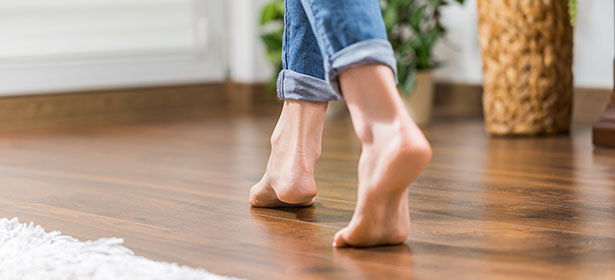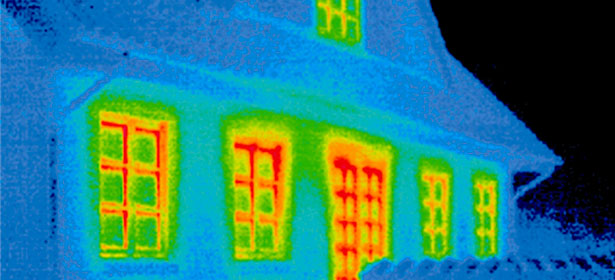
Make your property more energy efficient
Find out about our free home energy planning service
See moreBy clicking a retailer link you consent to third-party cookies that track your onward journey. This enables W? to receive an affiliate commission if you make a purchase, which supports our mission to be the UK's consumer champion.

Many of the homes in the UK are poorly insulated and inefficient to heat, leading to high energy bills and a big carbon footprint.
The most obvious reason to improve your home's efficiency is for an immediate decrease in your energy bills. However, the benefits of insulation should not be measured in cost savings alone.
Good insulation also improves comfort levels by keeping you cosy in winter and cool in summer, and cuts your home’s carbon emissions by lowering your energy consumption.
It can also help futureproof your home. Insulation will reduce the need for fans or air conditioning and help avoid overheating during more frequent summer heatwaves.
Better insulation prepares homes for the switch to technologies such as heat pumps and other low carbon heating systems, which work most efficiently in well-insulated buildings.
With energy bills predicted to remain higher than before the energy crisis for the foreseeable future, and government grant money available for some households, there’s never been a better time to insulate your home.

Find out about our free home energy planning service
See moreThe first step is to find out how well insulated your home is already, and how to improve it most cost effectively.
If your home has an Energy Performance Certificate, it will help you identify possible improvements. Your property is likely to have an EPC if it has been marketed for sale or rent since 2008.
You can find any current or expired EPC for a home in England, Wales, or Northern Ireland on the government’s EPC Register or, in Scotland, on the Scottish EPC Register run by the Energy Saving Trust.
You can also find a list of qualified Domestic Energy Assessors on either website.
EPCs are valid for ten years, so yours may have expired. If you have made changes to your home since the date of the EPC assessment, it may no longer be accurate.
If your home doesn’t have an up-to-date EPC, you can get one for around £60-£120, depending on the size and location of your home.
For a more detailed report, look for assessors who offer a home energy audit. Although more expensive, it may include thermal imaging as well as one-to-one advice and a comprehensive plan to help you upgrade your home.

The EPC shows the current and potential energy efficiency rating of your home from A (most efficient) to G (least efficient). It also lists ways you can improve the rating along with indicative costs.
There is a government tool to find ways to save energy in your home with more information about what you can learn from your EPC. It also has a phone line (0800 098 7950, open Monday to Friday, 8am to 6pm and Saturday 9am to 12pm) where you can get advice on retrofitting your home.
Recommendations may include big projects like installing external wall insulation or solar panels, as well as smaller changes such as switching to low-energy lighting.
The EPC lists the recommendations in the order that they should be carried out to maximise their effectiveness.
If you don't have an EPC, or other professional assessment, you can try doing a basic DIY home energy audit. Walk round each room in turn and note down what you find.
Armed with your energy efficiency information, you can start planning what action to take.
In 2024 a retrofit report for Victorian terraced homes, one of the UK's most common housing types, was released, commissioned by Barclays and developed by 5th Studio with insights from JGC Consulting on domestic energy use, and peer review provided by Etude.
The terraced homes built between 1850-1918 constitute over 10% of the UK's current housing stock. They share many of the same issues when it comes to retrofitting energy efficiency measures to bring them up to today's standards. When they were built, they were almost certainly not expected to be heated to the temperatures of 20oc and more that we expect today.
The retrofit guide is a practical tool designed to help homeowners make informed decisions to enhance the energy efficiency of their homes, with essential reading on energy use, best practice for making upgrades and strategies for ensuring any improvements are effective, all while preserving the character of the home. It also highlights available resources to help with costs.
The report suggests that if you're only making a few upgrades to your home you should consider the benefits of:
Whether or not you live in a Victorian terraced home, these five core updates are likely to be beneficial ways to improve your home's energy efficiency.
Read more on taking a fabric-first approach to insulation below.
If it's appropriate for your home, you can read the full Retrofit Pattern Book for owners of flat-fronted Victorian terraced housing.
Note that you should carefully assess what retrofitting options may be available or suitable for you and your home and should seek professional advice before commencing works.
The warmth created by your heating system – and the energy used – will be quickly lost through any uninsulated areas. Tackling these first will make your home noticeably warmer, lower your bills and improve your EPC score.
Making improvements to the external envelope, or fabric, of your home is widely acknowledged to be the best place to start if you are trying to reduce your energy use.
There are three main elements of your home that will benefit from insulation. These will prevent the most heat loss and make the biggest savings on your energy bills
Uninsulated homes lose more than a third of their heat through the external walls. A detached house loses heat through the walls on every side, as they are all exposed to the outside air, whereas a mid-terraced house or flat has fewer external walls so experiences less heat loss.
Check what type of walls you have. You need to know how your walls are built because the methods of insulating each type are quite different. The age of your home can give you an idea of the type of wall construction.
Read more about solid wall insulation cost and savings and cavity wall insulation installation, including costs and savings.
If your home has a steel or timber frame, or is a pre-fabricated concrete construction, you'll need advice from a specialist insulation installer or retrofit coordinator.

Check Which? insurance ratings and compare deals using the service provided by Confused.com
Get a quoteUp to 15% of lost heat goes through the ground floor of your home, so it should be insulated if possible. It's not normally needed for upper floors, but if you have a room above an unheated space, such as a garage, insulation may be beneficial.

Check what type of floors you have. Like walls, you need to know what type of floors you have to choose the right sort of insulation.
Many homes have both types of floor so you may need more than one approach.
Find out more about floor insulation options and costs.
Insulating a roof or loft is one of the most cost-effective ways to improve your home's energy efficiency. Large, detached houses and bungalows lose a high proportion of their heat through the roof, but most homes can benefit from a minimum of 270mm of loft insulation.
What type of roof do you have? Most roofs can be insulated, but there are different methods.
Learn more about roof insulation types and the costs of loft insulation.

As well as insulating the external envelope, there are other good ways to improve your home's energy efficiency and prevent heat from leaking out.
A well-insulated home will have a lower heat demand than a poorly insulated one. When you replace or upgrade your heating system, it should be sized to suit the reduced level of heat demand.
A system with a lower heat output is likely to be cheaper to buy and install and the ongoing running costs – your energy bills – will also be lower.
A good heating engineer should be able to calculate the right size boiler to meet your hot water and heating needs.
Check Which? Trusted Traders to find your local heating engineers.
Although gas and oil boilers will be phased out in due course, they may still be the best choice for you right now. To keep carbon emissions as low as possible, find out which boilers are the most efficient and find out how to use heating controls and thermostats most effectively.
A whole new heating system isn't possible for everyone, so it's worth working through the points above this one before you consider an upgrade.
But if your home is very well insulated, and if you're in a position to do so, it's time to think about the way it is heated.
Over the coming decade or so, new types of heating system are likely to become available. Alongside ground and air source heat pumps, we can expect to see other technologies that use electricity to generate heat.
This is an increasingly low-carbon energy source as more electricity is generated by renewable sources like wind and solar.
Read our overview of the different types of heating system currently available to find the best heating for your home.